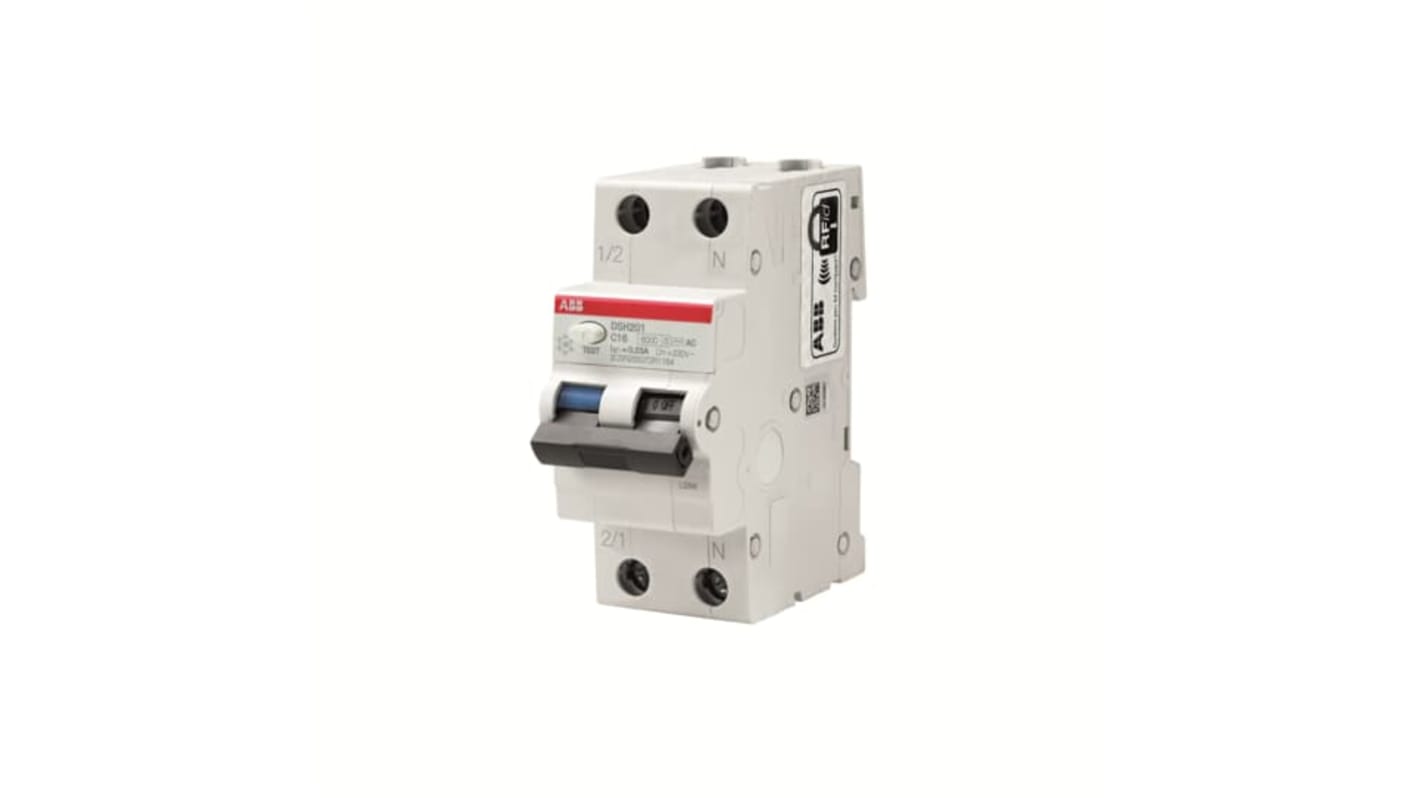ABB RCBO, 16A Current Rating, 2P Poles, Type AC
- RS Stock No.:
- 231-9948
- Mfr. Part No.:
- 2CSR255170R1164 DSH201 C16 A30
- Brand:
- ABB

Subtotal (1 box of 1 unit)*
£71.23
(exc. VAT)
£85.48
(inc. VAT)
FREE delivery for orders over £50.00
In Stock
- 3 unit(s) ready to ship from another location
- Plus 6 unit(s) shipping from 16 October 2025
- Plus 7 unit(s) shipping from 07 November 2025
Need more? Click ‘Check delivery dates’ to find extra stock and lead times.
Box(es) | Per Box |
|---|---|
| 1 + | £71.23 |
*price indicative
- RS Stock No.:
- 231-9948
- Mfr. Part No.:
- 2CSR255170R1164 DSH201 C16 A30
- Brand:
- ABB
Specifications
Technical Reference
Legislation and Compliance
Product Details
Find similar products by selecting one or more attributes.
Select all | Attribute | Value |
|---|---|---|
| Brand | ABB | |
| Current Rating | 16A | |
| Number of Poles | 2 | |
| Tripping Characteristics | Type AC | |
| Circuit Breaker Type | RCCB | |
| Series | DSH201 | |
| Rated AC Voltage | 230V | |
| Mounting Style | DIN Rail Mount | |
| Earth Leakage Protection Type | Type AC | |
| Breaking Capacity at Maximum Voltage Rating | 10 kA | |
| Overall Width | 35mm | |
| Overall Depth | 69mm | |
| Overall Length | 85mm | |
| Overall Dimensions | 69 x 85 x 35mm | |
| Standards Met | IEC | |
Select all | ||
|---|---|---|
Brand ABB | ||
Current Rating 16A | ||
Number of Poles 2 | ||
Tripping Characteristics Type AC | ||
Circuit Breaker Type RCCB | ||
Series DSH201 | ||
Rated AC Voltage 230V | ||
Mounting Style DIN Rail Mount | ||
Earth Leakage Protection Type Type AC | ||
Breaking Capacity at Maximum Voltage Rating 10 kA | ||
Overall Width 35mm | ||
Overall Depth 69mm | ||
Overall Length 85mm | ||
Overall Dimensions 69 x 85 x 35mm | ||
Standards Met IEC | ||
- COO (Country of Origin):
- IT
ABB RCBO, 6kA Rated Short-Circuit Capacity, 16A Current Rating - DSH201 Series - 2CSR255170R1164 DSH201 C16 A30
Looking for all-in-one protection for your power network? Fit this RCBO from ABB. It's a reliable multi-tasker that prevents overloads, short-circuits and earth leakages. The device has type-C tripping characteristics, so it trips at 5 to 10 times its 16A current rating, taking just a few milliseconds to cut power to downstream equipment. Its quick response time minimises the impact of faults by ensuring the energy released is kept at a safe level. This device weighs only 182g, so it puts minimal strain on your DIN rail.
Features & Benefits
• Space-saving dimensions of 69 (L) x 35 (W) x 85mm (H) fit easily in a confined space
• Wide operating temperature range between -25°C and +55°C for use in harsh conditions
• Wide operating temperature range between -25°C and +55°C for use in harsh conditions
Applications
• Distribution boards
• Medical equipment
• Manufacturing systems
• Engineering workshops
• Medical equipment
• Manufacturing systems
• Engineering workshops
How do I install this RCBO?
Installing this device is quick and easy. First, turn your mains power off and then attach the wires to the corresponding terminals. With the cables secured, snap the unit onto the DIN rail and turn the mains on again.
